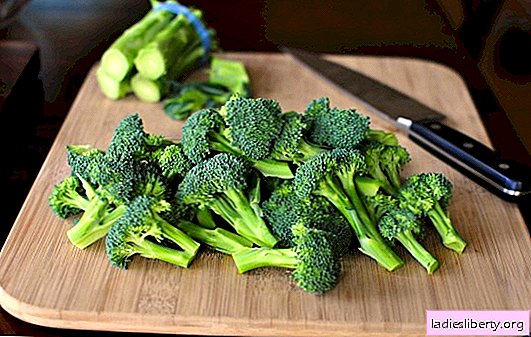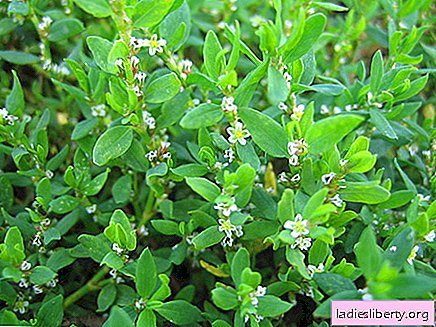
Both adults and children are eagerly awaiting the arrival of summer, because it is in summer that unusually tasty berries appear - strawberries and strawberries. Undoubtedly, in appearance they are similar, and belong to the same family - Pink.
In appearance, it is not difficult to distinguish them, but the city dweller who first encountered these berries will be confused.
How to distinguish strawberries from strawberries by external signs
Both strawberries and strawberries are not only tasty, but also healthy berries. They are distinguished by their sweetness, aroma and bright color. Even our ancestors turned their attention to these plants. Today, jam is made from these berries for the winter, cakes are decorated, and indeed, strawberries and strawberries are a separate dessert on many holidays.
Berries contain many useful substances: vitamin C, folic acid, minerals, protein, sugar, pectin. Unfortunately, it is not advisable for young children to give it, as even adults can be allergic to it.

So, let's take a look at what strawberries are. Strawberries are a perennial herb that can be either wild-growing (forest) or gardening. There are about 45 species. Often in winter, from under the snow you can see the green leaves of this berry. The name comes from the fact that strawberries are located close to the ground.
External signs of strawberries:
• the berry is not large (no more than 1 cm in diameter), the shape is round;
• at the end of the fetus there is no sharp nose;
• when trying to bite seeds, you can understand that they are very hard;
• ripe strawberries seeds are yellow, of which there are a lot and they stick out a little outward;
• even an unripe berry has a sweet taste;
• wild strawberries have the smell of leaves, forests, and at home she loses this aroma;
• the fruits ripen on a high stalk (20 cm), and the berries hang down to the ground;
• loves shade, most often it can be found in a clearing not far from tall grass;
• leaves are light green;
• Strawberries begin to bloom in late May and yield a high yield.
Strawberry leaves are triple, have a long stalk and antennae (lateral shoots). Each year, the number of antennae increases (this is how plant propagation occurs due to these shoots). The root has a fibrous system. At temperatures up to -7, the roots freeze, if it is -15 on the street, the strawberries freeze.
Strawberry and its external signs
To distinguish strawberries from strawberries is simple, but not when both of these berries are grown at home. In the garden, strawberries and strawberries are similar. But, when we compare the wild berry and the garden, here you can already find a lot of differences.

First of all, not all strawberry varieties are sweet. Many have a sour finish. While strawberries are most often sweet, even not ripened. Strawberry flowers are both female and male (strawberries have bisexual flowers). On women only pestles are located, and on men only stamens are located. Therefore, for pollination to occur, the insect must transfer pollen from the male flower to the female.
In principle, gardeners claim that strawberries and strawberries are one and the same. Berries are often given the name precisely by the size of the bush - if the bush is large, then it is strawberries, small - strawberries.
External signs of strawberries:
• berries are large and juicy (diameter 2-5 cm);
• seeds are deeper than strawberries;
• unripe strawberries have a pink and white color, taste like kiwi;
• ripe berry has a pronounced aroma;
• the shape of the fetus is elongated, the tip is slightly pointed at the end;
• berries are located on an elongated and thickened leg (10-12 cm);
• the leaves of the plant are large, dark green;
• tendrils are smaller and shorter than strawberries;
• the plant does not like shadow.
There are many varieties of strawberries and some of them are completely different. Shoots can be branched, like strawberries and the fruits will fall to the ground.
What is the difference between growing strawberries and strawberries
Wild strawberries grow and reproduce on their own. However, its incomparable aroma attracted the attention of many gardeners. Yes, strawberries can be grown in your garden, but remember that berries will never have that forest smell. Strawberries are rich in iron, phosphorus, calcium, which is very useful for our body.

No gardener will refuse to have in his yard a small plot planted with this berry. Quite often they cannot distinguish garden strawberries from strawberries, but it is worth remembering that strawberry flowers are bisexual, unlike strawberries.
We grow strawberries
A high yield, this is what attracts summer residents and residents of country houses. In order to successfully grow strawberries, you need to rely on a number of factors.
Strawberries propagate the easiest vegetative way (division of the "parent" bush). First of all, you need to think about preparing the soil (the bed needs to be processed deeper). Add humus and some wood ash to each well. Mix thoroughly afterwards.
This plant will be wonderful to take in the place where once grown onions or garlic. In the place of Solanaceae (potatoes, tomatoes, eggplant), it makes no sense to plant it - you will not wait for the crop.
From one bush you can get up to 15-20 daughter bushes (seedlings). The plant does not require special care or watering, but trim the tips of the roots before planting. After transplanting seedlings, you need to carefully water each seedling. It is recommended to water it once a week, and then fluff up the ground.
Disembarkation time - August, or, in extreme cases, the beginning of September. Later in the middle of September, it is not worth planting strawberries, as the plant may simply not have time to prepare for the cold. The seedling takes root quickly - in 4 days in good weather.
Grow strawberries
In order to sprout strawberries on your site, you do not need much effort, however, you will still need some recommendations. Remember that strawberries do not like moisture, so pay attention to the place of its landing. Like strawberries, strawberries will not grow in the nightshade. Choose rested soil fertilized with humus.

The width of the beds under this plant should be about 120 cm with 4 rows. Leave the distance between the seedlings 30-35 cm. The distance between the beds is 40 cm. Do not forget about fertilizer, add humus to each well.
Before planting seedlings, many experienced gardeners advise them to withstand 6-7 days in a cool place (cellar, garage). Make sure that the root neck is positioned vertically during planting. Shorten the long roots to 10 cm. After all the seedlings have been planted in the ground, be sure to water them well.
Proper care

If there is proper care, both of these berries will bear fruit up to 6 years. Loosen the soil, water no more than 2 times a week (young growth should be watered often until the leaves are opened). After the rain, do not forget that the soil needs oxygen. Remove old and dry bushes and leaves. Make sure there are no pests. A tick is very fond of berries, so every bush needs to be processed periodically (many gardeners use Actelik ampoules).
If you planted seedlings in the spring (from April 1 to May 10-15), both strawberries and strawberries will certainly bloom, but there will be no harvest. Therefore, peduncles must be removed. Berries are recommended to be collected once every 2 days. Do not overdo it.











